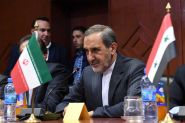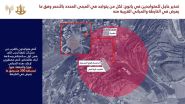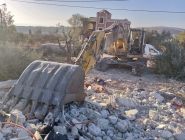
One year after the 2024 ceasefire between Israel and Hezbollah, southern Lebanon remains tense as the militia steadily rebuilds its military and civilian infrastructure, triggering daily Israeli airstrikes despite the truce.
Hezbollah’s Ideology Drives Reconstruction
An analysis of 669 Israeli airstrikes since November 27, 2024, by the Israeli research center Alma shows that Hezbollah is actively rebuilding its forces across three arenas—military, civilian, and ideological.
Hezbollah’s doctrine, centered on “armed resistance,” drives the organization’s persistence. Its leaders and operatives view reconstruction not merely as an operational necessity, but as a fundamental component of their identity. The militant group maintains influence over its Shiite base and solidifies dependency by providing essential services, including healthcare, aid programs, and education.
Strike Patterns Reveal Ongoing Activity
Despite official Lebanese claims that 85% of Hezbollah’s weapons south of the Litani River have been removed, strike patterns paint a starkly different picture.
Nearly half of all Israeli attacks targeted areas south of the Litani, once Hezbollah’s primary frontline zone, indicating ongoing efforts to restore underground networks, weapons depots, and fire-array capabilities. Israel has also hit civilian-economic facilities linked to Hezbollah’s logistical rebuild, including quarries, concrete plants, and engineering equipment.
Another 38% of strikes took place north of the Litani, particularly in the Badr Unit sector, where Hezbollah has shifted much of its organizational and operational activity following heavy wartime losses. The Nabatieh district alone saw more than 50 strikes this year. Meanwhile, only 1.6% of Israeli attacks targeted Beirut, despite the city hosting several key Hezbollah production and command hubs.
Targeted Eliminations and Ground Operations
Targeted killings have been central to Israel’s strategy. Alma reports that Israeli strikes have killed 218 Hezbollah operatives, including members of the elite Radwan Unit, accounting for roughly a third of all targets. The most senior casualty was Haitham Ali Tabatabai, Hezbollah’s senior military official, killed in Beirut on November 23.
Israel’s ground forces have also intensified operations along the border. The Israeli army disclosed this week that it carried out 1,200 raids along the Israel—Lebanon frontline since the ceasefire, a move intended to prevent Hezbollah fighters from integrating back into villages that have begun repopulating.
Israel Strikes Multiple Militias
Israel also struck members of other armed groups operating in Lebanon. Hamas suffered 18 losses, mainly in a single strike in the Ain al-Hilweh camp, while smaller numbers were recorded among the Amal Movement, the Lebanese Resistance Brigades, the Syrian Social Nationalist Party, and others.
Strategic Depth in Southern Lebanon and the Bekaa Valley
Alma reports that Hezbollah is steadily rebuilding infrastructure in frontline villages in southern Lebanon repeatedly targeted during the war, particularly in Aitaroun, Aita al-Shaab, Odaisseh, and Houla. Meanwhile, its strategic-depth zone in the Bekaa Valley, although struck far less frequently, remains crucial to weapons production, training, and logistics.
Lebanese Government Limited in Action
Despite reported progress in disarmament south of the Litani, the Lebanese Army has struggled to curb Hezbollah’s activities, constrained by politics, demographics, and the group’s entrenched local influence.
Israel Remains the Primary Actor
“The Israeli army remains the primary actor countering Hezbollah’s reconstruction,” the Alma report notes, “and long-term weakening of the organization requires sustained strikes and pressure across Lebanon.” Security experts warn that Hezbollah, backed by Iran, is preparing for the next confrontation with Israel, emphasizing that the threat is not a question of “if” but of “when.”
While Israeli strikes continue, questions remain over the effectiveness of targeting alone. Analysts argue that a long-term strategy to successfully disrupt Hezbollah’s reconstruction efforts will require not only military pressure, but also coordinated diplomatic and economic measures alongside allies, including the United States, Europe, and moderate Sunni states.
No Sign of Disarmament
Hezbollah shows no indication of disarming or relinquishing its armed infrastructure, highlighting the ongoing volatility of southern Lebanon and the persistent threat to northern Israeli communities. The coming months will test Israel’s ability to contain the organization and prevent a renewed escalation along the border.




Comments